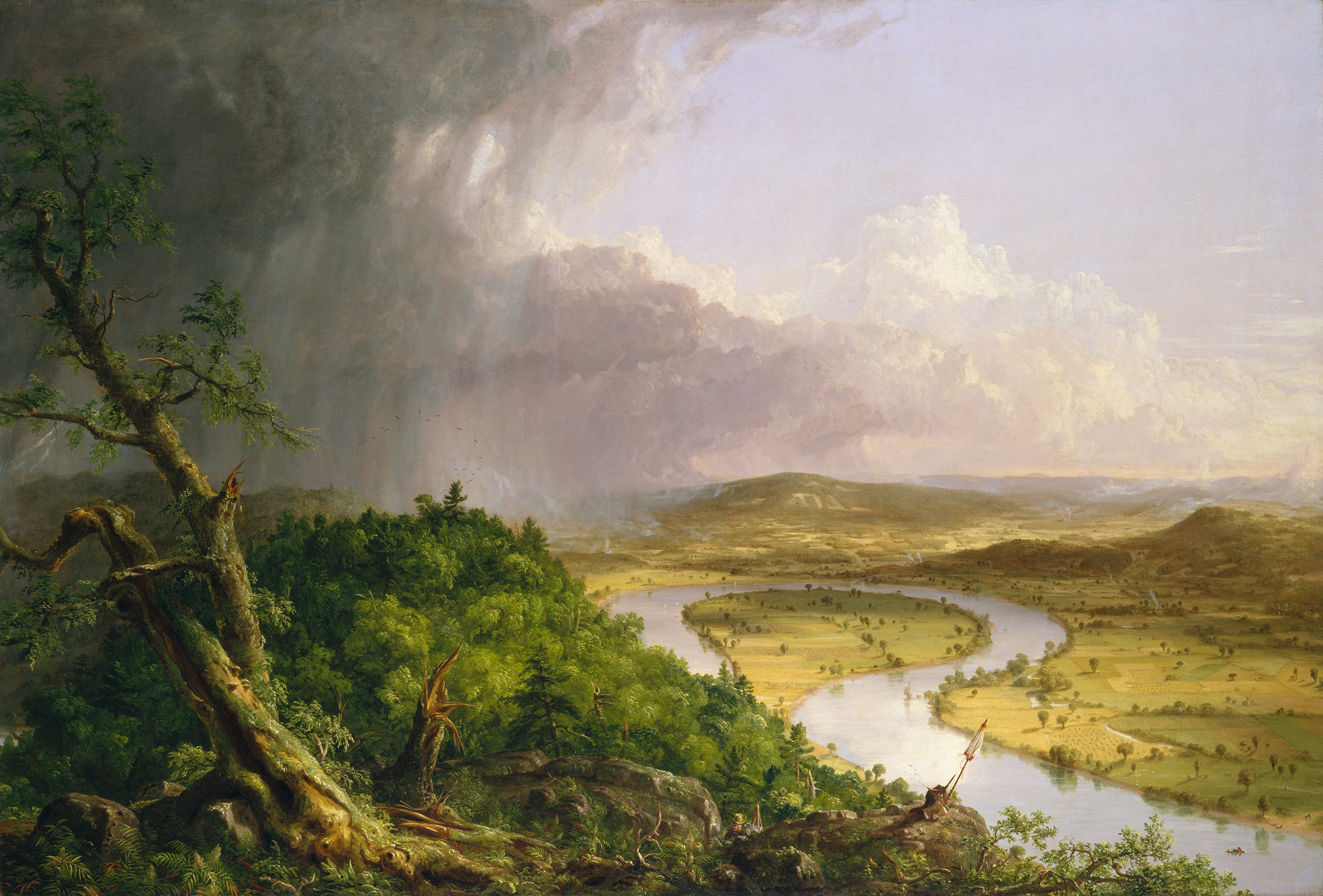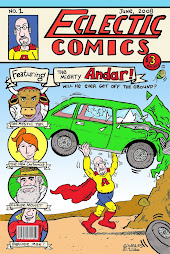 The school where I teach was recently fortunate enough to be recipient of one of the Picturing America grants from the National Endowment of the Humanities (NEH). Through this grant they provide schools with huge, beautiful reproductions of masterpieces of American art, as well as a teacher's guide book that provides ideas on how to use the reproductions to teach concepts from history and art.
The school where I teach was recently fortunate enough to be recipient of one of the Picturing America grants from the National Endowment of the Humanities (NEH). Through this grant they provide schools with huge, beautiful reproductions of masterpieces of American art, as well as a teacher's guide book that provides ideas on how to use the reproductions to teach concepts from history and art.This painting can almost be divided in half, with the left side an untamed wilderness. A storm is passing through towards the left with lightning and dark clouds. On the right side, the storm has passed and everything is calm. It is an ideal rural scene, but the removal of trees has left scars on the hillside. On closer inspection, those scars are in the shape of Hebrew letters. From man's view, they spell Noah. Looking down, from God's perspective, they same shapes spell Shaddai, or the Hebrew word for God, or Almighty. The NEH materials ask, "Is Cole suggesting that the landscape be read as a holy text that reveals messages from God?"
The Metropolitan website says that this painting is "laden with possible interpretations". The oxbow itself is an emblem of human control over nature.
According to the American Studies of the University of Virginia site
Cole relies heavily on European conventions of landscape painting to convey the visual representation of the struggle between wilderness and civilization...The dramatic storm clouds over the wilderness speak of the uncontrolled power of nature, but also of the sublimity of this power. Cole shows no remorse for the recession of the wilderness from the scene. The soft greens and yellows and the gentle rolling landscape of the farms suggest that the pastoral civilization that replaces the wilderness is as beautiful in its order as nature is in its sublimity.You have to look close to see Cole himself in the middle of the painting. He has staked out his claim by staking his umbrella into the hillside. His portfolio is nearby with his name on it.

According to essayist Eleanor Jones Harvey (1995)
his main goal, he says, was to create a “higher style of landscape that could express moral or religious meanings." He impressed several of his colleagues, teaching them that a landscape painter must have strength, determination, and should be willing to conquer the hazards of the weather and terrain in order to achieve success.Another writer (Wilmerding, 1993) thinks that in this painting Cole was "showing how the cultivation would destroy the natural wilderness, and as a result never meet in the painting.
Cole had many views about nature, human life and mortality. He felt that the nation had a wild beauty. Cole said in one of his articles, “To walk with nature as a poet is the necessary condition of a perfect artist.” He illustrated the American landscape with a new vision, but at the same time he did not forget to paint pictures that portray allegorical and religious subjects.
It's interesting to me how many clues to possible meanings are left, but it doesn't seem to be spelled out definitively.
Harvey, Eleanor Jones (1998). The Painted Sketch: American Impressions From Nature 1830-1880. Dallas: Harry N. Abrams, Inc., 1998.
Wilmerding, John (2003). Signs of the Artist: Signatures and Self-expression in American Paintings. Yale University Press. p. 58. ISBN 0300097794.



No comments:
Post a Comment